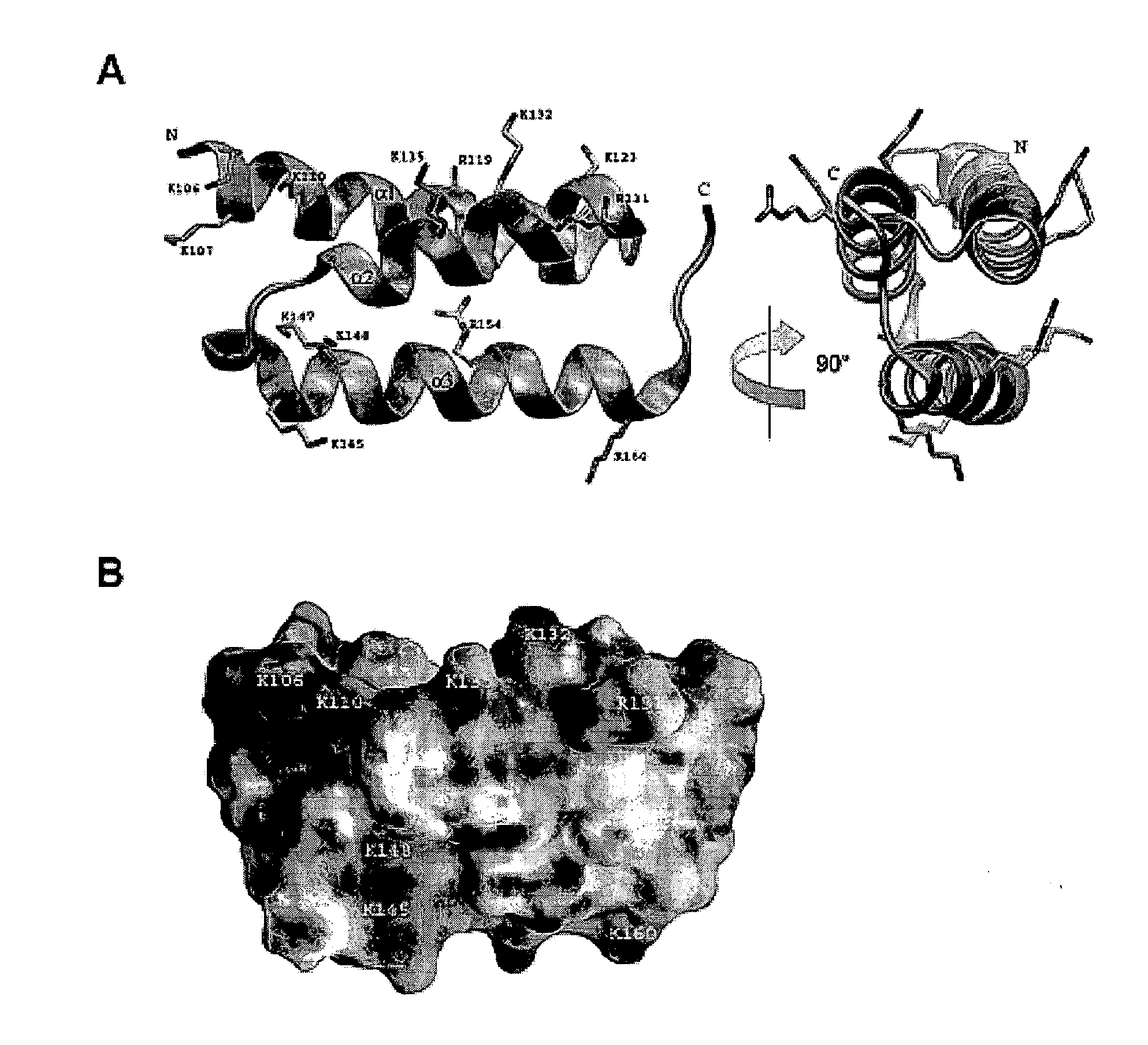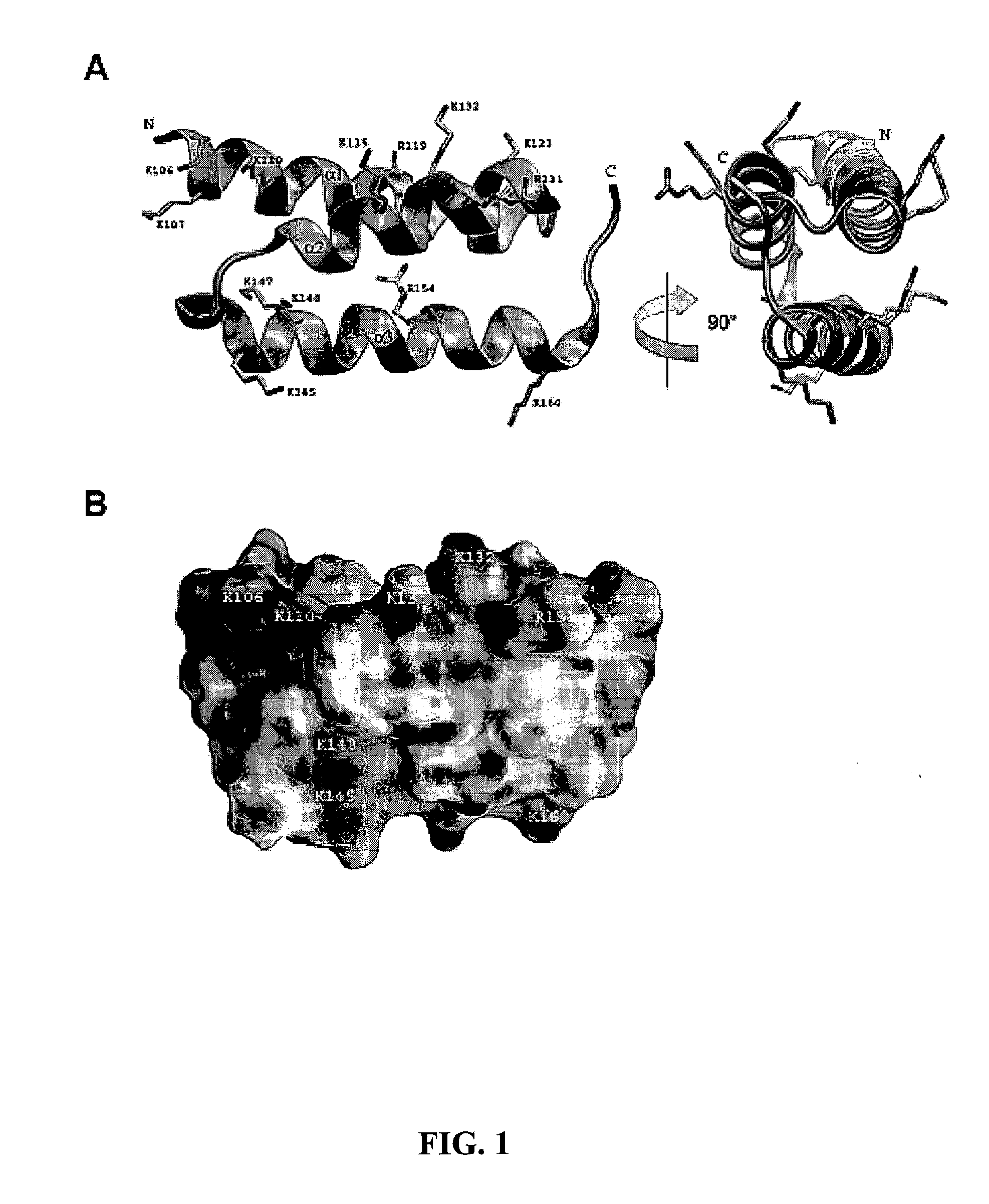Secreted Staphylococcus Aureus Proteins And Peptides For Use In Inhibiting Activation Of The Complement System
a technology of secreted staphylococcus aureus and activation system, which is applied in the direction of peptide/protein ingredients, immunological disorders, drug compositions, etc., can solve the problems of host cell damage, large molecular weight protein (240 kda and 26 kda) and assembly of membrane attack complex
- Summary
- Abstract
- Description
- Claims
- Application Information
AI Technical Summary
Benefits of technology
Problems solved by technology
Method used
Image
Examples
example 1
Structural Basis for a Mechanism of Complement Inhibition by Staphylococcus aureus
[0051]This example presents structures of a bacterial complement inhibitory protein both free and bound to its complement target. The 1.25 Å structure of the C3-inhibitory domain of Staphylococcus aureus Efb (Efb-C) reveals a novel helical motif involved in complement regulation, while the 2.2 Å structure of Efb-C bound to the C3d domain of human C3 provides insight into recognition of complement proteins by invading pathogens. Structure-function studies provide evidence for a new mode of complement inhibition wherein Efb-C binds to native C3 and alters the solution conformation of C3 in a manner rendering it unable to participate in successful downstream activation of the complement response.
Methods:
[0052]Protein Expression and Preparation. A DNA fragment encoding the C-terminal C3-binding domain (residues 94-165) of Efb from S. aureus strain Mu50 was PCR-amplified from the full-length Efb expression...
example 2
Identification of a Novel Secreted Protein from S. aureus. That Binds C3 and Inhibits Complement Pathway Activation
[0082]The uncharacterized protein SAV 1155 (GenBank Accession Number NP—371679 and denoted Ehp for Extracellular Fibrinogen-binding Protein Homologous Protein in the remainder of the text) was identified during a genome-wide scan to identify potential Type-I Signal Peptidase-dependent secreted proteins from S. aureus. The Ehp open-reading frame encodes a 109 residue polypeptide, although the primary sequence of this protein contains a high-probability Type-I signal peptidase cleavage site between residues 29 and 30 and is predicted to yield an 80 residue mature protein with a deduced molecular weight of 9.558 kDa. To determine whether Ehp was in fact secreted from S. aureus, polyclonal antisera were raised against a recombinant form of Ehp corresponding to the predicted mature protein. The immune sera were used to test for the presence of Ehp in the growth medium of S. ...
example 3
Quantitative Analyses of C3 Interactions with S. aureus Proteins Using Isothermal Titration Calorimetry and Recombinant C3d
[0084]Conversion of C3 to C3(H2O) and C3b is central to activation of the downstream complement response. Functional mapping of regions that participate in structural rearrangements in C3 during its activation has revealed that most of the regions that undergo conformational change are loops localized around the C3d domain, a result that is consistent with previous observations that C3d is critical to both the activation and regulation of the complement response. Appropriately, Efb binds to human C3, potently blocks C3 activation through both the classical and alternative pathways, and this interaction is localized to the C3d region. Previous studies by others also suggested an equilibrium dissociation constant (Kd) of approximately 240 nM for the Efb / C3d interaction, as determined by fluorescence quenching of tryptophan residues. To quantitatively assess the in...
PUM
| Property | Measurement | Unit |
|---|---|---|
| Fraction | aaaaa | aaaaa |
| Structure | aaaaa | aaaaa |
Abstract
Description
Claims
Application Information
 Login to View More
Login to View More - R&D
- Intellectual Property
- Life Sciences
- Materials
- Tech Scout
- Unparalleled Data Quality
- Higher Quality Content
- 60% Fewer Hallucinations
Browse by: Latest US Patents, China's latest patents, Technical Efficacy Thesaurus, Application Domain, Technology Topic, Popular Technical Reports.
© 2025 PatSnap. All rights reserved.Legal|Privacy policy|Modern Slavery Act Transparency Statement|Sitemap|About US| Contact US: help@patsnap.com



